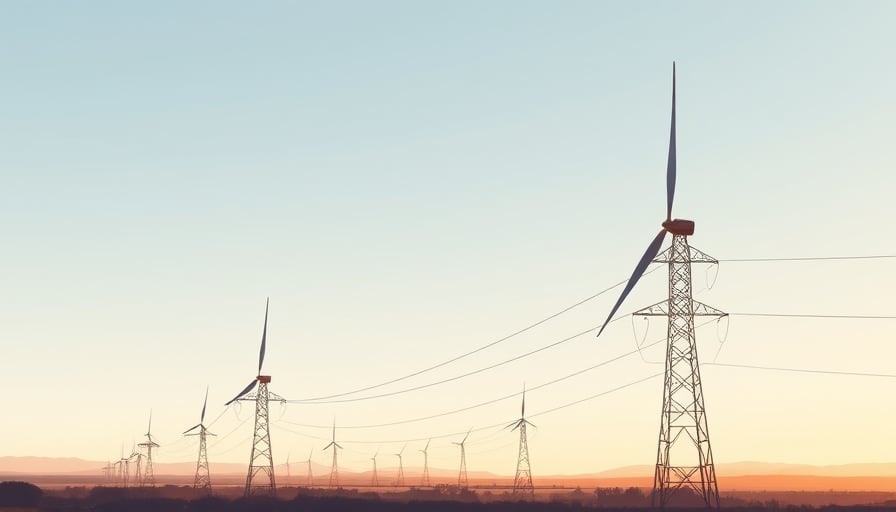Corporate News
Evergy Inc. released its third‑quarter 2025 financial results on November 6. Earnings rose compared with the same period last year, yet the company fell short of analyst expectations. Adjusted earnings per share were slightly below guidance, prompting Evergy to tighten its full‑year earnings forecast. In response, the utility announced a modest increase to its quarterly dividend, raising the payout by a small percentage to $0.695 per share. The company’s leadership reiterated its outlook for the remainder of the year, while noting the need for continued focus on cost management and operational efficiency.
Impact on Power Generation, Transmission, and Distribution
The Q3 report underscores the persistent tension between growth in renewable generation and the need to maintain grid reliability. Evergy’s portfolio now includes 25 % renewable capacity, a figure that has risen sharply in the past two years due to policy incentives and strategic investment. However, intermittent resources such as wind and solar introduce variability that stresses the transmission network and complicates real‑time dispatch decisions. The company’s investment plan allocates 12 % of its capital budget to grid‑stabilizing technologies, including high‑capacity FACTS devices, adaptive protection schemes, and advanced energy‑storage systems.
These measures are intended to mitigate voltage and frequency excursions, a key concern for utilities operating in deregulated markets. By deploying synchronous condensers and power‑electronic converters, Evergy aims to emulate the inertia traditionally provided by large thermal generators, thereby reducing the risk of cascading outages during high renewable penetration scenarios.
Renewable Integration Challenges
Integration of distributed energy resources (DERs) and electric‑vehicle (EV) charging infrastructure presents two major challenges:
- Demand‑side uncertainty – The variability of solar generation is amplified by the stochastic nature of EV charging patterns. Advanced forecasting algorithms, leveraging machine‑learning models, are being incorporated into the company’s energy‑management system to anticipate and smooth load peaks.
- Infrastructure aging – Much of Evergy’s transmission and distribution (T&D) network was designed for conventional generation loads. Upgrading conductors, expanding substation capacity, and installing smart‑metering platforms require substantial capital outlays. The company’s capital expenditures for 2025 total $1.3 billion, with 35 % earmarked for T&D upgrades.
The financial report highlights that the shortfall in earnings relative to expectations is partially attributable to higher-than-anticipated costs in these areas, as well as to a temporary decline in wholesale power prices due to the recent summer heat wave.
Regulatory Frameworks and Rate Structures
Evergy operates under the regulatory authority of the Public Utility Commission of Kansas. The commission’s rate‑setting process now incorporates a “Renewable Portfolio Standard” (RPS) component and an “Integrated Resource Planning” (IRP) requirement, mandating utilities to present a cost‑effective mix of generation, storage, and demand‑response solutions. The latest IRP cycle, completed in 2023, allows for a modest increase in customer rates (up to 1.2 % per year) to support grid modernization, provided that cost‑of‑service analyses demonstrate the necessity of such increases.
The utility’s rate‑structure revisions emphasize a “capacity‑based” pricing model for the bulk‑power market, moving away from traditional marginal‑cost tariffs. This shift aligns rates more closely with the true cost of maintaining grid reliability in an era of high renewable penetration, but also raises the potential for consumer rate hikes if the cost of infrastructure investments cannot be fully recovered through rate adjustments.
Economic Impacts and Utility Modernization
From an economic standpoint, the investment in grid stability and renewable integration is expected to deliver long‑term cost savings by reducing outage costs, minimizing curtailment of renewable resources, and improving system resilience. However, the short‑term financial pressure is evident in the tightened earnings forecast. The dividend increase—though modest—serves to reassure investors that the company remains committed to returning value while navigating the capital‑intensive transition.
Utility modernization also carries broader societal benefits:
- Enhanced reliability reduces downtime for critical infrastructure and businesses, translating into measurable economic productivity gains.
- Reduced transmission losses from distributed generation curb the need for new bulk‑generation capacity, lowering future wholesale prices.
- Lower emissions support regulatory compliance and improve public health outcomes.
Engineering Insights into Power System Dynamics
At the core of Evergy’s strategy is the integration of dynamic system models that simulate the interplay between renewable generation, storage, and conventional resources. By employing time‑series stability analyses, engineers can predict the system’s response to sudden loss of generation or load. The deployment of wide‑area measurement systems (WAMS) provides real‑time phasor data, enabling operators to detect and react to system disturbances within seconds.
Moreover, grid‑forming inverters are becoming central to modernizing the distribution network. Unlike legacy grid‑following converters, grid‑forming devices can establish voltage and frequency references, thereby providing inertia and fast frequency response that are critical for preventing large‑scale blackouts.
Conclusion
Evergy Inc.’s Q3 2025 results reflect a utility in transition, balancing the imperative to invest in a resilient, low‑carbon grid with the need to manage short‑term earnings pressures. Through targeted capital allocation, regulatory compliance, and advanced engineering solutions, the company aims to secure a stable power system that supports renewable integration while keeping consumer costs in check.
